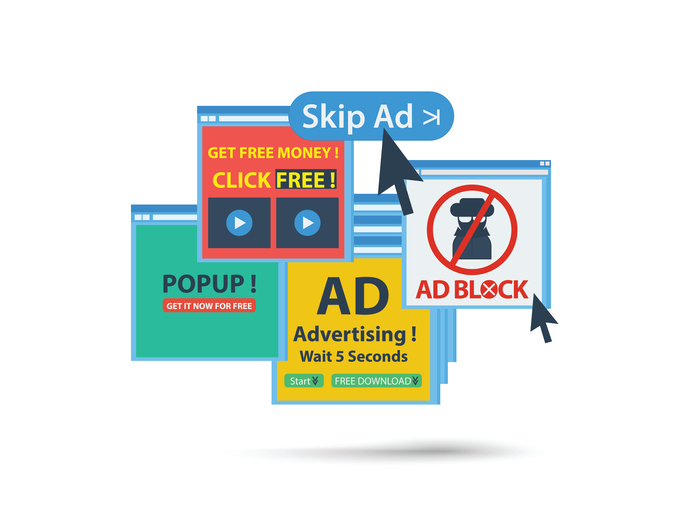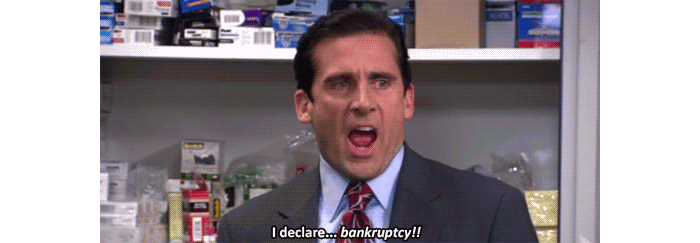Why Retargeting is the Michael Scott of Paid Media

Source: NBC Universal Television
The advertising industry has come a long way over the past 20 years, especially in regards to digital advertising. Before Facebook ads and Buzzfeed content were even a thought, it was all too common to find one of these bad boys popping up on your screen:

Fast-forward two decades and the internet is a completely different world than what it was in 1998. With over three billion users a year, Americans alone spend an average of 24 hours a week online. And with the internet evolving to be what it is today, we have pretty much kicked those spammy pop-ups to the curb. These days, we expect advertisers to understand our wants and needs. We want to be able to engage with our favorite brands online without it feeling forced. But with the internet setting the bar so high for advertisers, why does retargeting still suck?
Here at Nebo, we have a lot of opinions about retargeting and how to do it right. Whether it’s telling a story or finding a respectful balance, we believe retargeting can drive great results if approached thoughtfully and purposefully. This may not come as a surprise, but I’m a big fan of retargeting (and "The Office", as you will soon discover). Of course, I’m a little biased — I do create retargeting campaigns for a living. But just hear me out...
We see ads online every day for things that don’t apply to our lives at all. I recently saw an ad online for a “smart” garage door. I live in an apartment complex. There is no way I am in the market for a garage door now or any time in the foreseeable future. Remarketing ads solve this exact problem! Instead of seeing ads for garage doors all over my Facebook timeline, retargeting only promotes products and services that are relevant to me.

Via GIPHY
And while retargeting makes so much sense to marketers (there is also a ton of data to support it), it still has a bad rep in most of the online community. Why? Because it’s still being poorly executed. In a lot of ways, retargeting is like the Michael Scott of paid media. They both have good intentions, but are often misunderstood. They overstep boundaries, make you feel uncomfortable and can annoy the $*&% out of you. But, at the end of the day, Michael and retargeting both mean well and are beloved by the few who truly understand them.
But while Michael Scott’s character matures throughout his seasons on "The Office", the issues we have with retargeting today are the same issues we were writing blog posts about five years ago! Why are advertisers still making these dumb mistakes?! Things like:
Retargeting to people who have already converted.
This may seem obvious, but marketers let this slip ALL. THE. TIME. As I was scrolling through my Facebook feed today, I got retargeted for a shirt that I had already bought online and am currently wearing! What makes this so frustrating is that there is such a simple fix — use a burn pixel! Having one of these on your thank you page will go a long way for your bottom dollar. Think of all the money you could save by marketing to people who haven’t already bought your comfy flannel shirt. I’m looking at you, Madewell.

Via GIPHY
Being too personal with your retargeting.
Most people are aware that what they do online can be tracked. The amount of data Facebook has on all of us is kind of terrifying. However, people don’t actually like to see their private information being used as a way to market to them. There is a fine line between being personalized and being too personal with an ad’s message. Good retargeting only references information that the consumer has specifically given to you, the advertiser — NOT information about an abandoned shopping cart or a deal based off of the user’s college fraternity. That’s just creepy.

Via GIPHY
Not. Using. Frequency caps.
The most basic thing you should do with all digital advertising (especially retargeting) is use frequency caps. As someone who buys about 90 percent of their purchases online, I get an overwhelming amount of different remarketing ads on a daily basis. However, I — and everyone else — don’t need to see the same ad for anything more than three to five times a day. From personal experience, I’ve been served the same HelloFresh ad over 20 times within a single day. Yes, it got to a point where I actually began to count. And as someone who works in digital marketing, I know why I’m seeing so many of these remarketing ads — I recently looked into getting a subscription. But seeing one more ad from HelloFresh isn’t going to make me buy from them. It’s actually this excessive amount of retargeting that’s going to push me, and most others, away from your brand.

Via GIPHY
Showing the same remarketing ads to very different people.
On top of controlling how many times people see your ads within a day or week, you should also control who sees what ad. Retargeting should be personalized to reflect the person you’re trying to convert. (Just remember: not too personal). You shouldn’t be served a retargeting ad for men’s button-down shirts when you went to the store’s site for women’s denim jackets. Even the stage in the buyer’s journey should be considered when creating a retargeting strategy. One size doesn’t fit all.

Via GIPHY
But how many more times can Nebo write about retargeting before we’ve become a broken record? Over the years, our retargeting blog count has grown to four frustrated posts, and we still have a long way to go.
However, this isn’t just a frustrated post. Despite its often flawed execution, I still love retargeting and I’m the type of person who likes to look at the glass half-full. We have actually seen a lot of progress over the past few years. There are new tools and capabilities like:
Dynamic Retargeting.
While this isn’t necessarily a brand-new capability, dynamic retargeting goes a long way for your ROI. It also solves the problem of showing the same ads to different people. Ninety-eight percent of first-time site visitors leave a site without completing a conversion action. Dynamic retargeting makes it possible to re-engage this large audience by featuring the exact products and services recently viewed by the site visitor. These tailored ads are super easy to set up and have click-through rates up to two to three times higher than typical online ads. But most importantly, these dynamic remarketing ads are actually relevant to the consumer.

Via GIPHY
E-Commerce & Behavioral Segmentation.
Dynamic retargeting is great and all, but some marketers are taking things to the next level with e-commerce and behavioral segmentation. Amazon is a great example of this. Instead of advertising products that their customers have already clicked on, Amazon retargets consumers with new products based on of their online behavior. If I’m already buying a new shower curtain, it makes a lot of sense that I might buy a similar bath mat, matching towels, etc., etc. This exact remarketing tactic is how I find my Amazon cart full at the end of the day — and also how I justify my Amazon Prime membership.

Via GIPHY
Cookieless Retargeting.
Back in its beginnings, retargeting wouldn’t have been possible without the cookie. But with internet privacy and GDPR at the forefront of many conversations these days, companies like Google and Facebook are moving away from cookies altogether. Instead, these companies will begin to rely more heavily on other practices, like device recognition, algorithms and linked accounts. So even though retargeting originated from the cookie, marketers have found new and inventive ways to retarget users.

Via GIPHY
Split Funnel Attribution.
Impressions, clicks, and conversions. Regardless of your KPIs and campaign goals, your ad’s main purpose is to drive qualified traffic to your site. However, there is a big difference between driving new traffic versus retargeted traffic. In order to fully understand the holistic impact of your marketing efforts, it’s important that you distinguish the difference between the two. Quantcast’s Split Funnel Attribution model allows you to “split” the conversion funnel, accurately measuring people who convert the first time they click your ad, separate from people who have visited your site, clicked a retargeted ad and then converted. The buyer’s journey is completely different, so having this attribution capability is a big freakin' deal.

Via GIPHY
The average person is exposed to over 4,000 ads a day. And a good chunk of what we see would be categorized as retargeting. As digital marketers, it’s our job to hold the industry accountable for higher retargeting standards. We already have to adapt to new data privacy laws and updated algorithms on a daily basis. Let’s officially close the chapter on retargeting faux pas and move innovative retargeting practices and tools forward. Retargeting is Beyoncé. Always.

Via GIPHY
Comments
Add A Comment